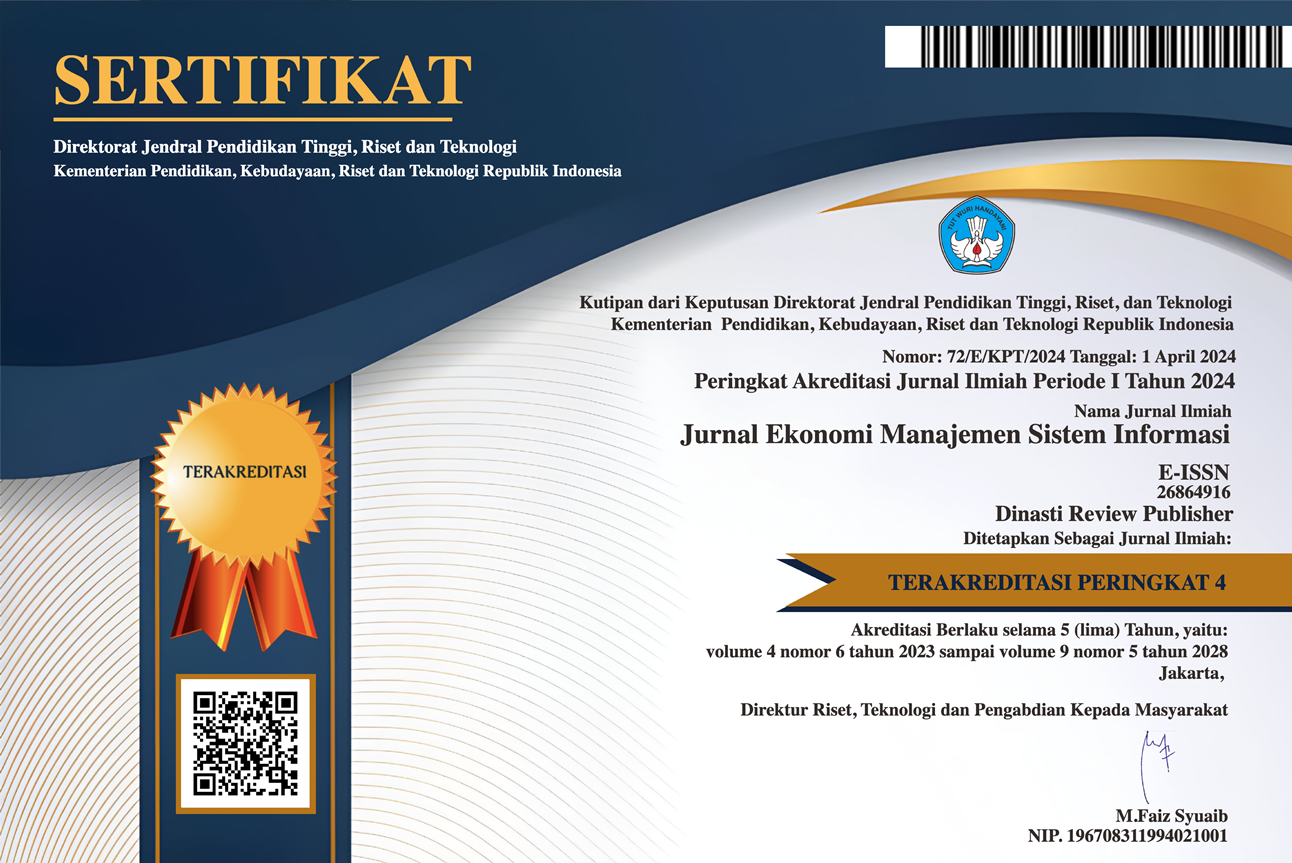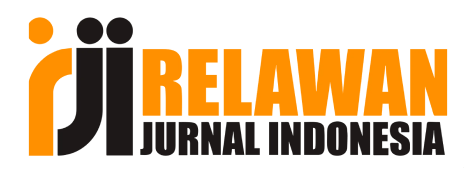Applying VRIO Analysis for Strategy Formulation to Increase Competitiveness Through Intangible Asset Mastery (Case Study on Kopi Kita in Padang Ciy)
DOI:
https://doi.org/10.38035/jemsi.v6i4.4352Keywords:
Competitive Strategy, Intangible Assets, VRIO Analysis, Resource-Based View, Coffee Shop, MSMEsAbstract
The increasingly fierce competition in the coffee shop industry demands entrepreneurs to have effective strategies to enhance their competitiveness. This research aims to analyze strategies for enhancing competitiveness through the mastery of intangible assets at Kopi Kita in Padang City using the Resource-Based View (RBV) approach and VRIO analysis (Valuable, Rare, Inimitable, Organized). This research uses a qualitative method with a case study, involving observation and in-depth interviews with the owner and branch managers of Kopi Kita. The research results show that mastery of intangible assets, such as competencies, knowledge management, and business networks, plays a strategic role in creating sustainable competitive advantages. Kopi Kita has leveraged competencies in understanding customer preferences, strategic decision-making, product innovation, and problem-solving abilities. In addition, effective knowledge management practices and a wide business network are also key factors in the success of the business. Based on the VRIO analysis, Kopi Kita possesses valuable, rare, hard-to-imitate, and well-organized resources and capabilities, thereby providing a long-term competitive advantage. This study provides theoretical and practical contributions for small and medium enterprises (SMEs) in designing intangible asset-based strategies to enhance competitiveness in the coffee industry.
References
Abdul Rahman, A. A., Chong, P. L., Ong, T. S., Teh, B. H., & Ong, T. C. (2023). Business network and balanced scorecard: an analysis of small and medium enterprises in Malaysia. Arab Gulf Journal of Scientific Research. https://doi.org/10.1108/AGJSR-10-2022-0218
Afifah, A., Gustiawan, W., Sari, M. P., & Septivani, M. D. (2023). Pelatihan Dan Pendampingan Pengelola Coffee Shop Membangun Interaksi Dengan Konsumen Melalui Media Sosial. Journal Of Human And Education (JAHE), 3(4), 489–492. https://doi.org/10.31004/jh.v3i4.533
Amaya, N., Bernal-Torres, C. A., Nicolás-Rojas, Y. W., & Pando-Ezcurra, T. T. (2024). Role of internal resources on the competitive advantage building in a knowledge-intensive organisation in an emerging market. VINE Journal of Information and Knowledge Management Systems, 54(5), 1153–1169. https://doi.org/10.1108/VJIKMS-01-2022-0029
Anjaningrum, W. D., Azizah, N., & Suryadi, N. (2024). Spurring SMEs’ performance through business intelligence, organizational and network learning, customer value anticipation, and innovation - Empirical evidence of the creative economy sector in East Java, Indonesia. Heliyon, 10(7), e27998. https://doi.org/10.1016/j.heliyon.2024.e27998
Arief, I., Hasan, A., Putri, N. T., & Rahman, H. (2023). INTERNATIONAL JOURNAL ON INFORMATICS VISUALIZATION journal homepage?: www.joiv.org/index.php/joiv INTERNATIONAL JOURNAL ON INFORMATICS VISUALIZATION Literature Reviews of RBV and KBV Theories Reimagined: A Technological Approach Using Text Analysis and Po. 7(December), 2532–2542. www.joiv.org/index.php/joiv
Bagna, E., Cotta Ramusino, E., Denicolai, S., & Strange, R. (2024). Intangible assets and firm performance: The relative effects of recognized and unrecognized assets. Journal of Open Innovation: Technology, Market, and Complexity, 10(3), 100356. https://doi.org/10.1016/j.joitmc.2024.100356
Bariski, A. (2020). Manajemen Sumber Daya Manusia: Tinjauan Strategis Berbasis Kompetensi (Edisi Pert). Pustaka Aksara Reda.
Dian Harja, Games, D., & Sari, D. K. (2024). PENGARUH MODEL BISNIS DIGITAL TERHADAP KINERJA USAHA MIKRO DAN KECIL SEKTOR KULINER DI KOTA PADANG: Efek Mediasi dari Pembaruan Bisnis. Journal Publicuho, 7(3), 1328–1342. https://doi.org/10.35817/publicuho.v7i3.494
Elya Dasuki, R. (2021). Manajemen Strategi?: Kajian Teori Resource Based View. Coopetition?: Jurnal Ilmiah Manajemen, 12(3), 447–454. https://doi.org/10.32670/coopetition.v12i3.710
Ferreira, A., Franco, M., & Haase, H. (2022). Strategic alliances and development of intellectual capital: a study of technology-based SMEs. International Journal of Organizational Analysis, 30(6), 1644–1671. https://doi.org/10.1108/IJOA-10-2020-2440
Fred R. David. (2013). Strategic Management: A Competitive Advantage Approach: Concept And Cases (S. Yagan (ed.)). Pearson Education, Inc.
Kuncoro, M. (2020). Strategi Meraih Keunggulan Kompetitif Di Era Industri 4.0 (Ratih Indah Utami (ed.)). CV. Andi Offset.
Muafi, A. J. (2024). Manajemen Strategi: Dari Visualisasi Menjadi Aksi (I. Salsabil (ed.)). CV. Mega Press Nusantara.
Nurafni Octavia, A., Septiyani, I., Ayu Anggraini, I., & Anggun Mayasari, D. (2023). Analisis Strategi Pemasaran Untuk Meningkatkan Daya Saing UMKM Keripik Gedebok Pisang di Blora Analysis of Marketing Strategy to Increase the Competitiveness of MSME Gedebok Banana Chips in Blora. Indonesian Accounting Research Journal, 3(3), 281–289.
Sima, X., Coudert, T., Geneste, L., & de Valroger, A. (2022). Knowledge management in SMEs: preliminary ideas for a dedicated framework. IFAC-PapersOnLine, 55(10), 1050–1055. https://doi.org/10.1016/j.ifacol.2022.09.528
Soleh, Salsabila, A. N., Nuraeni, A. S., & Ardila, R. (2023). Tantangan Dan Risiko Dalam Menjalankan E-Business Pada Sektor Usaha Mikro Kecil Dan Menengah (Umkm) Pasca Pendemi. Senada, 6, 272–277. http://senada.idbbali.ac.id
Soomro, R. B. (2024). Impact of entrepreneurial knowledge , skills , and competencies on MSME performance?: an evidence from a developing country. https://doi.org/10.1108/APJIE-04-2023-0071
Surianingsih, S., Rispawati, D., & Yusuf, S. Y. M. (2023). Strategi Pemasaran Galeri Tenun Desa Setanggor Dalam Meningkatkan Daya Saing Penjualan Kain Tenun Di Wilayah Praya Barat Lombok Tengah. Distribusi - Journal of Management and Business, 11(2), 229–240. https://doi.org/10.29303/distribusi.v11i2.410
Tefera, C. A., & Hunsaker, W. D. (2022). Measurement of intangible assets using higher-order construct model. Journal of Entrepreneurship in Emerging Economies, 14(2), 185–207. https://doi.org/10.1108/JEEE-08-2020-0297
Downloads
Published
How to Cite
Issue
Section
License
Copyright (c) 2025 Muhammad Farizandani Fadhil Akbari, Hafiz Rahman, Donard Games

This work is licensed under a Creative Commons Attribution 4.0 International License.
Hak cipta :
Penulis yang mempublikasikan manuskripnya di jurnal ini menyetujui ketentuan berikut:
- Hak cipta pada setiap artikel adalah milik penulis.
- Penulis mengakui bahwa Jurnal Ekonomi Manajemen Sistem Informasi (JEMSI) berhak menjadi yang pertama menerbitkan dengan lisensi Creative Commons Attribution 4.0 International (Attribution 4.0 International CC BY 4.0) .
- Penulis dapat mengirimkan artikel secara terpisah, mengatur distribusi non-eksklusif manuskrip yang telah diterbitkan dalam jurnal ini ke versi lain (misalnya, dikirim ke repositori institusi penulis, publikasi ke dalam buku, dll.), dengan mengakui bahwa manuskrip telah diterbitkan pertama kali di Jurnal Ekonomi Manajemen Sistem Informasi (JEMSI).











































































